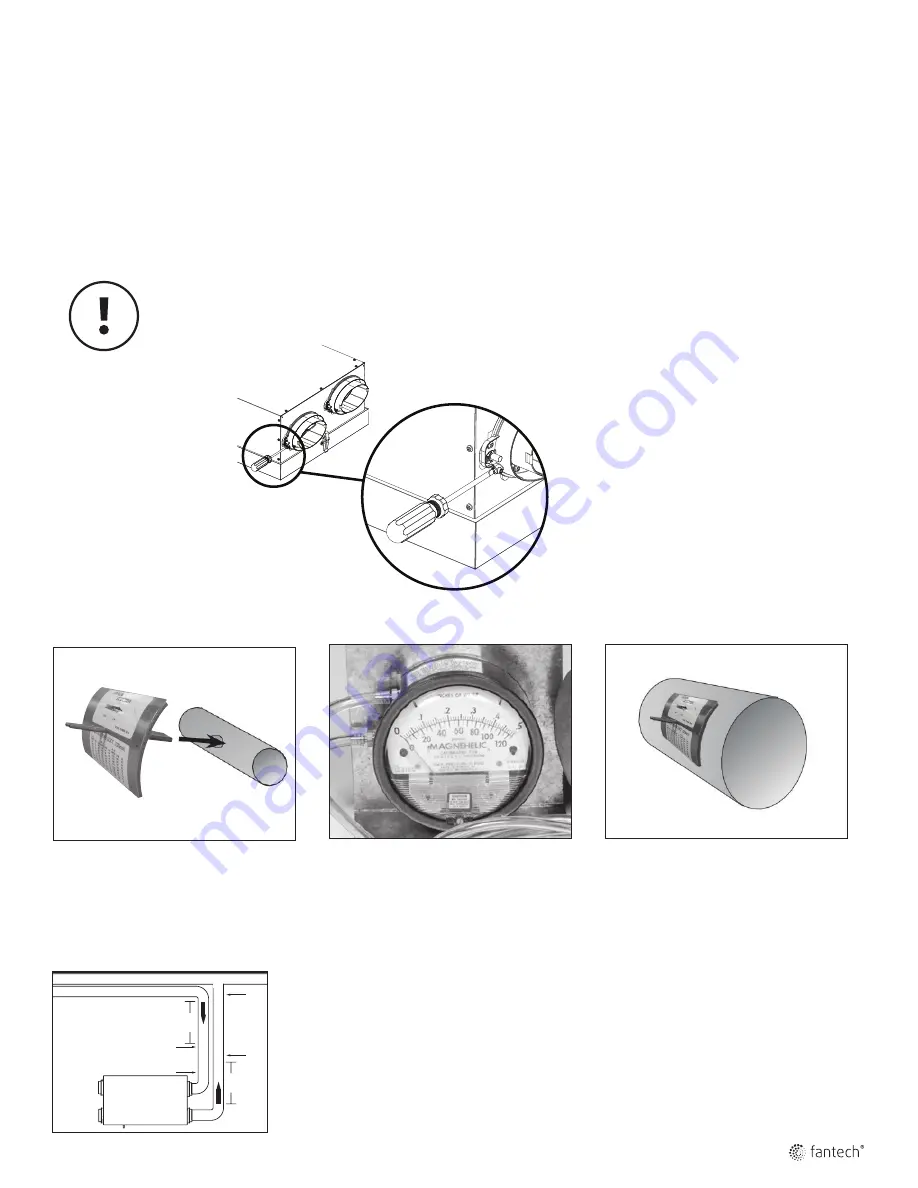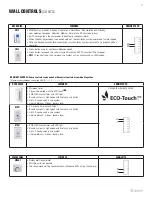
15
Airflow balancing
(Cont'd)
1
Cut hole in duct and insert flow measuring
station. Make sure that the flow measuring
station’s air direction arrow points in the
direction of the airflow. Secure the flow
measuring station with aluminum foil tape.
2
Before taking the reading, make sure that
the magnehelic gauge is level and at 0.
Refer to the flow measuring station’s
chart to determine your unit’s airflow
velocity.
3
Adjust the “Supply Air Out” damper until
you reach the desired velocity. Follow
steps 1-3 to adjust the “Exhaust Air Out”
damper, if needed.
Measure
here
Minimum
457mm
(18")
Measure
here
Minimum
457mm (18")
• To avoid airflow turbulence and incorrect
readings, the airflow velocity should be
measured on a section of steel ducting.
Reading should also be taken at a minimum
distance of 457 mm (18") from the unit or
elbow. Measurement should also be made
prior to any transition in the duct work so
entire airflow is measured.
Measuring the airflow using station (grid) method
Adjusting airflows
A damper is integrated into the Fresh Air to Building collar. This damper replaces the installation of a separate damper into the Fresh
Air to Building ducting line.
The damper-collar is pre-set in the fully opened position. If the procedure requires a reduction in airflow to the fresh air duct, simply
turn the adjustable arm located on the side of the collar counter clockwise until desired airflow is obtained.
WARNING! DO NOT TURN ADJUSTABLE ARM CLOCKWISE WHEN DAMPERS ARE FULLY OPENED AS DAMAGE MAY OCCUR TO THE
MECHANISM
Illustration #1
Summary of Contents for FIT 120E
Page 18: ...18 Wiring diagram Observe polarity on all accessory controls where applicable ...
Page 46: ...46 Note ...
Page 47: ...47 Note ...
















































